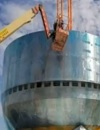 |
||
|
Chinese scientists make breakthroughs in deep underground exploration of uranium deposits CNNC, PUBLISHED 30.05.2022 A demonstration project for the deep underground exploration of hydrothermal uranium deposits in South China recently passed a national acceptance check. The Deep Resources Exploration and Mining (DREAM) project was led by the Beijing Research Institute of Uranium Geology (BRIUG) of China National Nuclear Corporation (CNNC). Multiple breakthroughs have been made in the application of advanced technologies and equipment in relevant scientific and technological research over the past four years. During the demonstration project, researchers successfully discovered industrial-level uranium ores at a depth of about 1,550 meters, setting a new national record and laying a solid foundation for future exploration of mineral resources. In terms of metallogenic depth, they proposed the maximum depth of hydrothermal uranium deposits in South China can be as deep as 3,000 meters. Meanwhile, the research team made breakthroughs in the research and development of deep location and exploration technologies and equipment related to hydrothermal uranium deposits. For instance, they independently developed a Gamma-ray spectroscopy logging system, which is still functional at a depth of 3,000 meters and boasts strong survival capability in a harsh natural environment noted for high temperature and pressure. Other news: Russian specialists present reports at IAEA Conference on Fast Reactors A total of 70 reports by Russian participants were presented at the conference. Specialists of SSC RIAR have successfully completed the modernization of the VK-50 reactor This is the first and only operating pressurized boiling reactor with natural coolant circulation in the country. Ghana will decide on the site before the end of the year Four candidate sites are currently being explored. |
Hero of the day 
First Concrete laid at Xudapu NPP Power Unit 4 in China First concrete ceremony has taken place at Xudapu NPP Unit 4 constructed under the Russian VVER-1200 design. The construction has reached its active phase. Xudapu NPP Unit 3 is also in the active stage of construction. INTERVIEW
FR22 concluded its work OPINION
AtomInfo.Ru |

